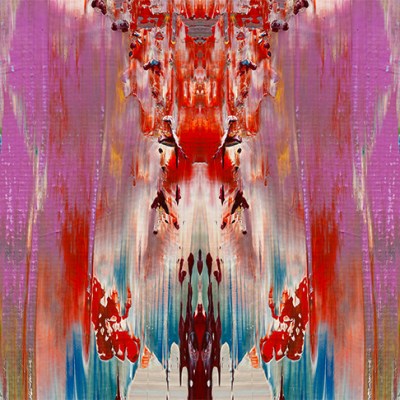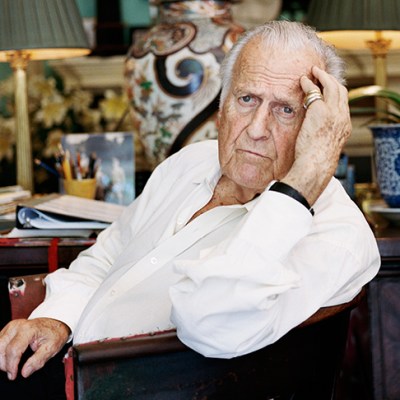As more art fairs launch into an overcrowded international circuit, the competition to attract both visitors and exhibitors inevitably intensifies. For veteran events, the challenge is to remain fresh and relevant; for the fledgling fairs it is to position themselves by offering something new. TEFAF New York Spring – at the Park Avenue Armory – is unusual, but not unique, in finding itself in both camps. An offshoot of a fair launched more than 30 years ago in Maastricht, which defied all odds by evolving into the most important art and antiques fair in the world, it is also a new event that has to establish a distinctive presence in what is the most competitive art market in the world. One of TEFAF’s two new satellite fairs in the city, and now in its third year (3–7 May), it focuses on modern and contemporary art and design.
‘In the US, there is real art-fair fatigue,’ admits Sofie Scheerlinck, the Belgian-born managing director of TEFAF New York, when we meet at TEFAF Maastricht in March. ‘We do try to say that this fair offers a very different experience. It is not all about buying, but about seeing a wide range of things, enjoying and learning. We use the more domestic period rooms on the upper floor of the Armory, which no other fair uses, and we build a balcony and bar up there for visitors to relax in, and we stage a cultural programme of talks and events.’ What it brings from the flagship fair is what she describes as the TEFAF DNA, along with its reputation as a high-quality and carefully – and now independently – vetted event. ‘It is important for us that people feel they can buy without hesitation.’
It is, of course, not only collectors that need to be wooed but also the gallerists; the success of any fair lies in balancing the scales between visitor and gallery expectation. Strikingly, 12 new exhibitors have been signed up this year – a significant proportion for an event that numbers just 90. ‘We wanted to freshen things up. Our aim is to switch out between five and 15 exhibitors each year,’ Scheerlinck explains. Given the range of works presented, which includes a sprinkling of antiquities and tribal art as well as jewellery, photography and design, the offering also has to be balanced and representative. In this fair-flooded landscape, why have these dealers stepped forward to add to their already punishing schedules? A straw poll elicits a variety of responses.
Blaüer Elkekopf (1979–80), Georg Baselitz. Galerie Thaddaeus Ropac (price on application)

Thaddaeus Ropac is someone who knows all about fair fatigue, his gallery having already participated in fairs in Taipei, Los Angeles, New York and Hong Kong this year. ‘I have always been hesitant about exhibiting at fairs that offer a huge range because I want to be careful that art is not reduced to a luxury item,’ he begins, ‘but TEFAF is just incredible as everything is at the top level, and the focus of the Spring fair is 20th-century art.’ He continues: ‘We already exhibit at Frieze New York and now that the two events overlap, I decided to do something different and exhibit at both in a way that connects our programmes. The fairs have such different dynamics. At Frieze we will show new work by artists such as Alex Katz and Baselitz, while at TEFAF we will focus on paintings made between 1980 and 1983 by Baselitz and Emilio Vedova. The two knew and respected one another and exchanged ideas, and we wanted to show how they used similar brushwork to create very different outcomes, figurative and abstract.’ There will be two paintings by each, including Blaüer Elkekopf by Baselitz (1979–80). ‘There is very little work by Baselitz from the ’80s available now,’ Ropac says.
Luxembourg & Dayan is exhibiting in one of the period rooms on the Armory’s upper floor. Daniella Luxembourg says: ‘I was impressed by the quality of the fair, and the feeling that it was for real collectors. I liked the fact that it is relatively small, and intimate. Art fairs have become such a huge industry, and I am not tempted to exhibit at large impersonal tents on the outskirts of towns. What is appealing to me is to have an atmosphere, or an exciting building with a certain history that is in the centre of the city.
Untitled (Self-Portrait) (2011), Rudolf Stingel. Luxembourg & Dayan (price on application)

‘We are a small gallery, and we don’t want to become bigger. We concentrate on the secondary market, and on great publications, exhibitions and conferences. We need to have connectivity in a place – we also have a gallery in New York – but also to be part of a community of galleries and collectors, and New York is the centre of collecting in America.’ As for their designated space at TEFAF: ‘It is a historic room with boiserie and so it seemed obvious to us to do something quite classical, and there is nothing more classical than portraits and self-portraits.’ The show they are creating, which she describes as ‘a lot of work’, includes Rudolf Stingel’s Untitled (Self-Portrait) (2011).
Pace similarly offers secondary material, making its debut here with a show dedicated to Jean Dubuffet. Owner Marc Glimcher says, ‘We’re very much looking forward to showing an incisive selection of his paintings, collage and sculpture, which feel as daring and innovative today as they did at their creation.’
1 simple trame 45° coupée, décalée (1973), François Morellet. The Mayor Gallery ($325,000–$425,000)

A stalwart of TEFAF Maastricht as well as an exhibitor at Frieze New York is the Mayor Gallery. ‘People say they do well at TEFAF New York so I thought I would give it a try,’ James Mayor explains breezily, adding that Frieze had turned from a one-day fair in terms of business to a two-hour fair last year due to the heatwave. ‘One of the main problems for us was the smallness of the stands at the Armory. It was quite difficult for us to work out what we could put in there.’ Like Ropac, Luxembourg, and Glimcher, he has decided to narrow his focus, and to combine seven paintings by François Morellet with one work each by his friends Gianni Colombo and Gerhard von Graevenitz. ‘A stand cannot be confusing, but I think this should be clean and elegant and I think the paintings will look very beautiful. We will see what happens.’ Prices $325,000–$425,000.
TEFAF New York Spring takes place at the Park Avenue Armory from 3–7 May.
From the May 2019 issue of Apollo. Preview and subscribe here.



